Applied Mathematics
Vol.4 No.1A(2013), Article ID:27497,6 pages DOI:10.4236/am.2013.41A033
Convergence of Discrete Adomian Method for Solving a Class of Nonlinear Fredholm Integral Equations
Mathematics and Engineering Physics Department, Faculty of Engineering, Mansoura University, Mansoura, Egypt
Email: *a_gomaa@mans.edu.eg
Received September 25, 2012; revised November 25, 2012; accepted December 3, 2012
Keywords: Nonlinear Fredholm Integral Equations; Contraction Mapping; Adomian Decomposition Method; Quadratures Techniques
ABSTRACT
In recent papers the solution of nonlinear Fredholm integral equations was discussed using Adomian decomposition method (ADM). For case in which the integrals are analytically impossible, ADM can not be applied. In this paper a discretized version of the ADM is introduced and the proposed version will be called discrete Adomian decomposition method (DADM). An accelerated formula of Adomian polynomials is used in calculations. Based on this formula, a new convergence approach of ADM is introduced. Convergence approach is reliable enough to obtain an explicit formula for the maximum absolute truncated error of the Adomian’s series solution. Also, we prove that the solution of nonlinear Fredholm integral equation by DADM converges to ADM solution. Finally, some numerical examples were introduced.
1. Introduction
Integral equations provide an important tool for modeling a numerous phenomena and processes and also for solving boundary value problems for both ordinary and partial differential equations. Their historical development is closely related to the solution of boundary value problems in potential theory. Progress in the theory of integral equations also had a great impact on the development of functional analysis. Reciprocally, the main results of the theory of compact operators have taken the leading part to the foundation of the existence theory for integral equations of the second kind [1-4]. Therefore, many different methods are used to obtain the solution of the linear and nonlinear integral equations. Among these methods ADM which has gained a great interest in the analytical solutions of linear and nonlinear Fredholm integral equations [5-9]. This is due to many advantages such as simplicity and high accuracy [5,6]. The Adomian solution is obtained as an infinite series which converges to exact solution [10], under some mild conditions. In this work, the nonlinear the Fredholm integral equation
 (1)
(1)
is considered where 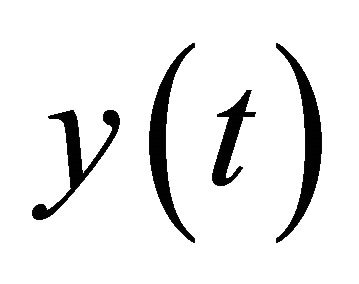 is known continuous function on
is known continuous function on 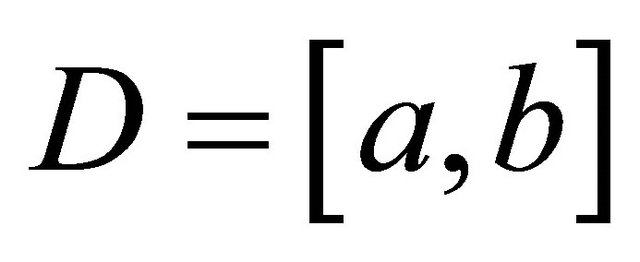 and the kernel
and the kernel  is continuous on the square
is continuous on the square  and bounded such that
and bounded such that 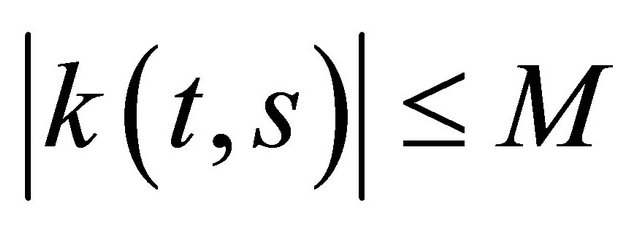 where, M is the upper bound on the square E. The nonlinear term
where, M is the upper bound on the square E. The nonlinear term 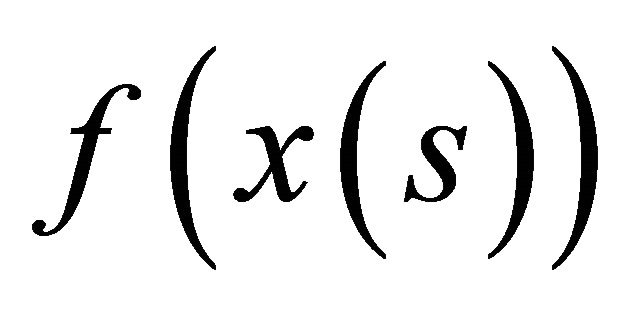 is Lipschitz continuous with
is Lipschitz continuous with  L is Lipschitz constant and has Adomian polynomials representation
L is Lipschitz constant and has Adomian polynomials representation
 (2)
(2)
where the traditional formula of 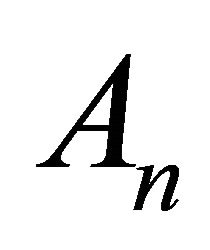 is
is
 (3)
(3)
The author in [11,12] deduced a new formula to the Adomian’s polynomials which can be written in the form
 (4)
(4)
where the partial sum 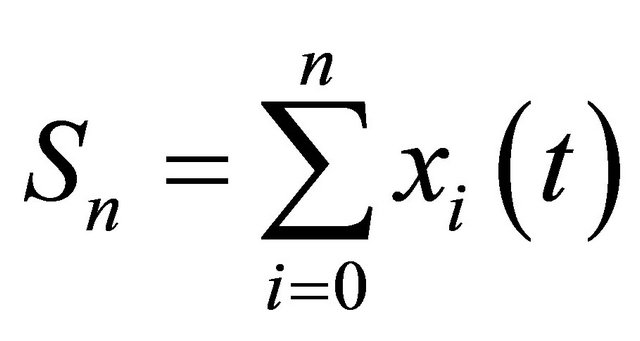 and
and 
Formula (4) is called an accelerated Adomian polynomials and it was used successfully in [13] for solving a class of nonlinear fractional differential equations and in [14] for solving a class of nonlinear partial differential equations. Formula (4) has the advantage of absence of any derivative terms in the recursion, thereby allowing for ease of computation. In this work, it will be used directly in convergence analysis (see Theorem 2) and all calculations concerning the numerical examples. Application of ADM on (1) yields:
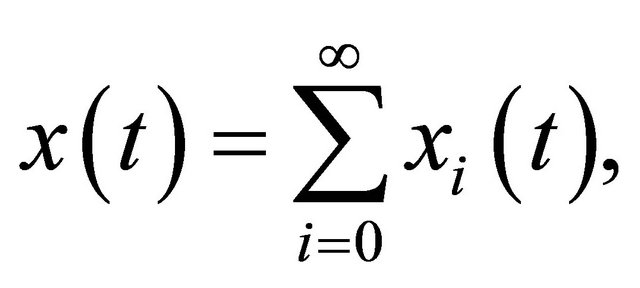 (5)
(5)
where the components  are computed using the following recursive relations
are computed using the following recursive relations
 (6)
(6)
 (7)
(7)
The computation of each component 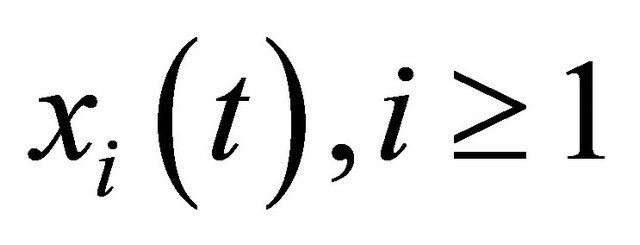 requires the computation of integral in Equation (7). If the evaluation of that integral analytically is possible, ADM can be applied in a simple manner. In case where the evaluation of the integral in (7) is analytically impossible, ADM can not be directly applied. In order to overcome this obstacle, please see the details of Sections 2 and 3. In Section 2, a problem is solved in a special case where the kernel
requires the computation of integral in Equation (7). If the evaluation of that integral analytically is possible, ADM can be applied in a simple manner. In case where the evaluation of the integral in (7) is analytically impossible, ADM can not be directly applied. In order to overcome this obstacle, please see the details of Sections 2 and 3. In Section 2, a problem is solved in a special case where the kernel  is separable [15]. In Section 3, a problem is solved in a more general case where the kernel
is separable [15]. In Section 3, a problem is solved in a more general case where the kernel 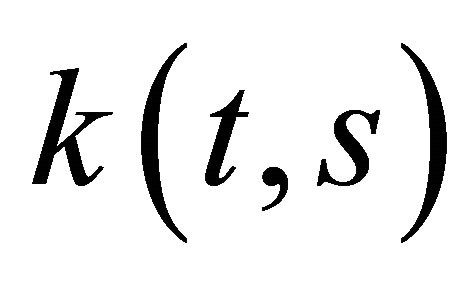 is not separable and we introduce a discretized modified version of the ADM which is called DADM. In Section 4, convergence of DADM is discussed and the maximum absolute truncated error is estimated. Finally, to verify the theoretical results, some numerical examples are presented in Section 5.
is not separable and we introduce a discretized modified version of the ADM which is called DADM. In Section 4, convergence of DADM is discussed and the maximum absolute truncated error is estimated. Finally, to verify the theoretical results, some numerical examples are presented in Section 5.
2. Numerical Implementation of ADM
For the sake of making this paper self-contained, a brief summary of numerical implementation of ADM will be introduced in this section (for more details see [15]). Let the kernel function be separable of the form
 (8)
(8)
then Equation (7) becomes
 (9)
(9)
Consider any numerical integration scheme to approximate definite integral by the following formula [16-18]
 (10)
(10)
where 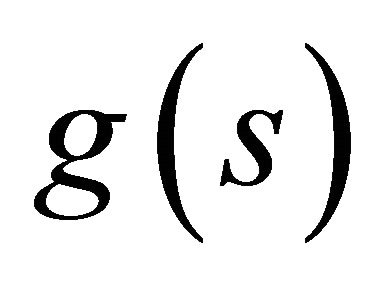 is continuous function on
is continuous function on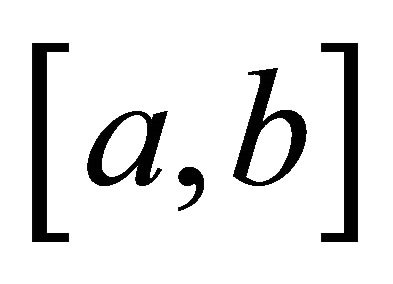 ,
,  are the nodes of the quadrature rule,
are the nodes of the quadrature rule,  and
and  are the weight functions. Applying formula (10) on Equation (9) to obtain
are the weight functions. Applying formula (10) on Equation (9) to obtain
 (11)
(11)
Now, the approximate solution of Equation (1) is the sum of all the components  in Equation (11) and the first component in Equation (6).
in Equation (11) and the first component in Equation (6).
3. Discrete Adomian Decomposition Method
In case the kernel function , is not separable, the integral in (1) can not be computed and hence the ADM will not be able to continue in order to obtain solution. Therefore, we suggest DADM to overcome this obstacle. The idea is to discretize the independent variable; t, just before applying the quadrature rule. This gives an opportunity to evaluate the integral in Equation (7) numerically but, of course, at the discretization points of the independent variable. Thus, the discrete version of Equations (6) and (7) may take the form
, is not separable, the integral in (1) can not be computed and hence the ADM will not be able to continue in order to obtain solution. Therefore, we suggest DADM to overcome this obstacle. The idea is to discretize the independent variable; t, just before applying the quadrature rule. This gives an opportunity to evaluate the integral in Equation (7) numerically but, of course, at the discretization points of the independent variable. Thus, the discrete version of Equations (6) and (7) may take the form
 (12)
(12)
 (13)
(13)
 and
and  are the weight functions of any numerical integration scheme. The approximate solution of Equation (1) using DADM can be computed as
are the weight functions of any numerical integration scheme. The approximate solution of Equation (1) using DADM can be computed as
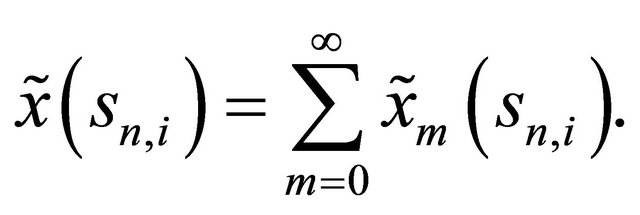 (14)
(14)
Rewriting Equations (12)-(14) in matrix form
 (15)
(15)
 (16)
(16)
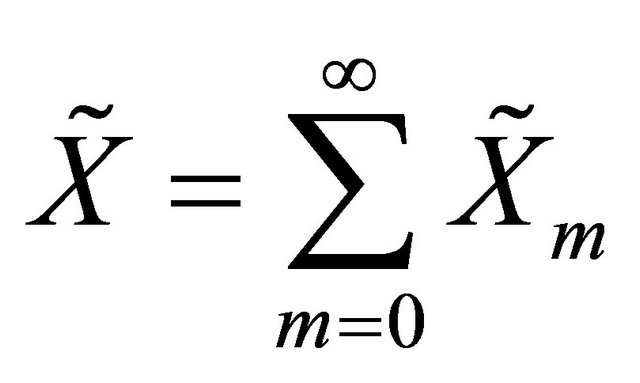 (17)
(17)
where  are all vectors of dimension
are all vectors of dimension  and B is
and B is  matrix such that
matrix such that
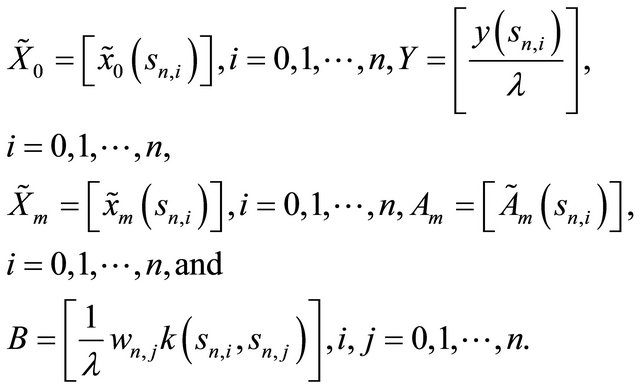
The main advantage of the proposed DADM is that the matrix B is unchanged during the computation of components 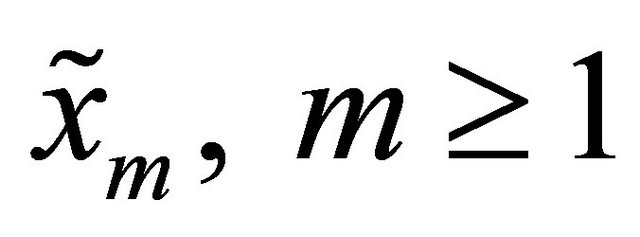 and the computation of the solution need not to solve linear algebraic system of equations like Nystrom method and projection methods. Also, this method can be used for solving Equation (1) with nonseparable kernel. Thus DADM is more general than the numerical implementation of ADM introduced in [15].
and the computation of the solution need not to solve linear algebraic system of equations like Nystrom method and projection methods. Also, this method can be used for solving Equation (1) with nonseparable kernel. Thus DADM is more general than the numerical implementation of ADM introduced in [15].
4. Convergence Approach of DADM
Convergence of the Adomian series solution was studied for different problems and by many authors. In [19,20] convergence was investigated when the method applied to a general functional equations and to specific type of equations in [21,22]. In convergence analysis, Adomian’s polynomials play a very important role however, these polynomials cannot utilize all the information concerning the obtained successive terms of the series solution, which could affect and directly the accuracy as well as the convergence region and the convergence rate. In the present analysis we suggest an alternative approach for proving the convergence. This approach depends mainly on El-Kalla accelerated Adomian polynomial formula (4). As a result to this approach, the maximum absolute truncated error of the series solution is estimated. Define a mapping  where,
where,  is the Banach space of all continuous functions on D with the norm
is the Banach space of all continuous functions on D with the norm 
4.1. Uniqueness Theorem
Theorem 1. Problem (1) has a unique solution whenever
 where,
where, 
Proof. Define the mapping to be:
 . and let x and
. and let x and 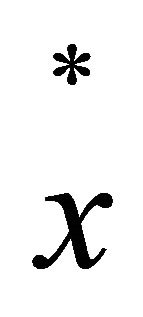
be two different solutions to (1) then

Under the condition  the mapping F is contraction therefore, by the Banach fixed-point theorem for contraction [23], there exist a unique solution to problem (1) and this completes the proof.
the mapping F is contraction therefore, by the Banach fixed-point theorem for contraction [23], there exist a unique solution to problem (1) and this completes the proof.
4.2. Convergence Theorem
Theorem 2. The series solution (5) of problem (1) using ADM converges if:  and
and 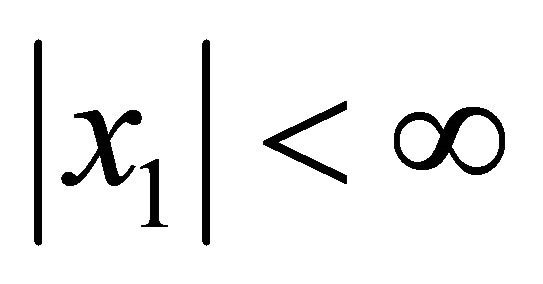
Proof. Let 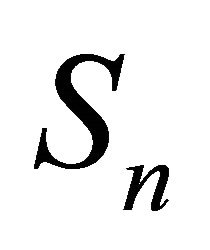 and
and  be arbitrary partial sums with
be arbitrary partial sums with  We are going to prove that
We are going to prove that 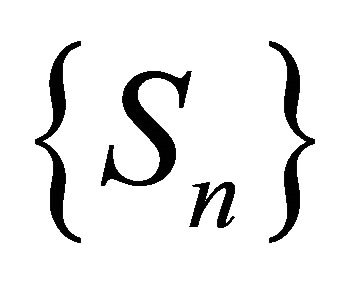 is a Cauchy sequence in Banach space B
is a Cauchy sequence in Banach space B
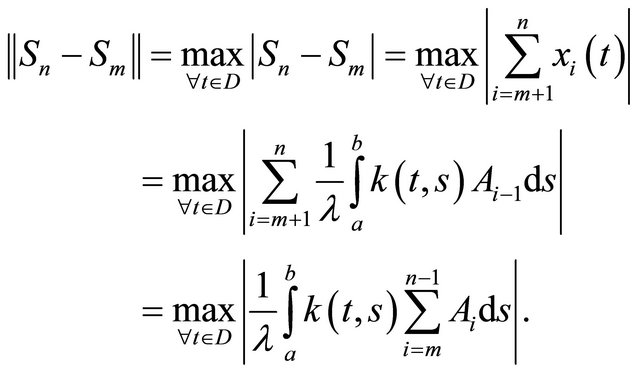
From Formula (4) we have 
so
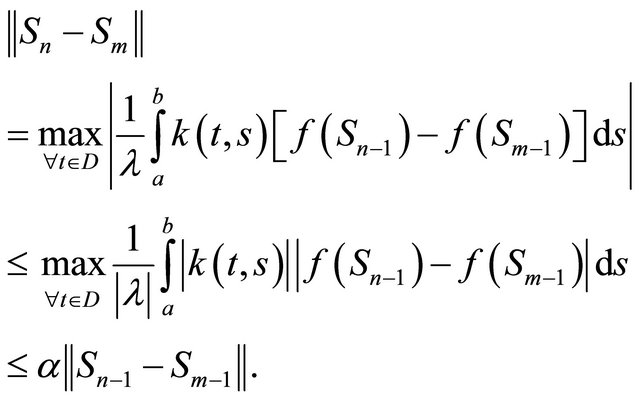
Let,  then
then

From the triangle inequality we have
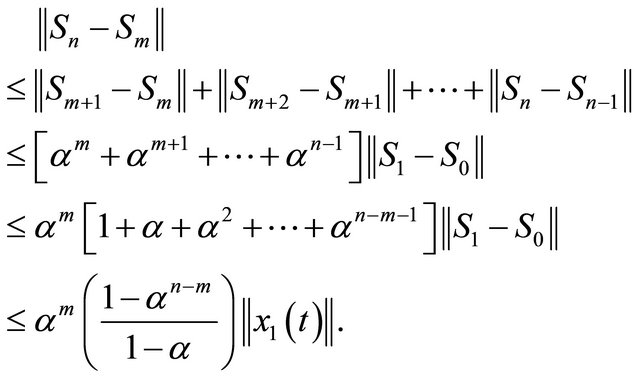
Since  so,
so, 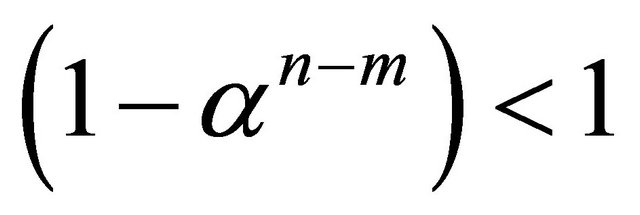 then
then
 (18)
(18)
But 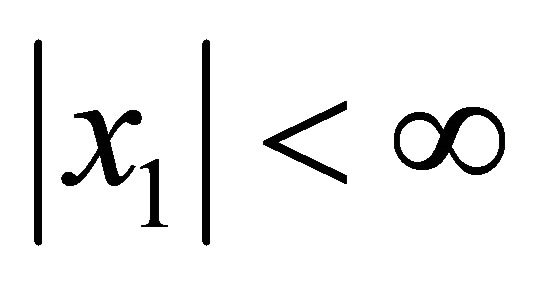 so, as
so, as ![]() then
then  We conclude that
We conclude that 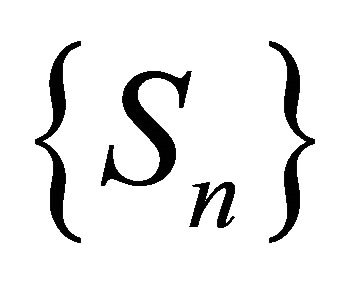 is a Cauchy sequence in
is a Cauchy sequence in 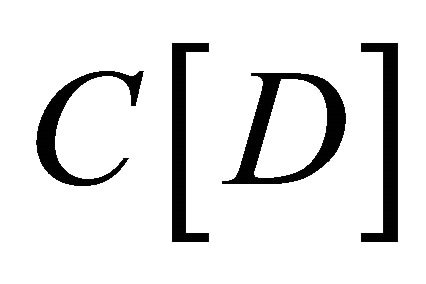 so, the series converges and the proof is complete.
so, the series converges and the proof is complete.
4.3. Error Estimate
Theorem 3. The maximum absolute truncation error of the series solution (5) to problem (1) is estimated to be:
 where
where 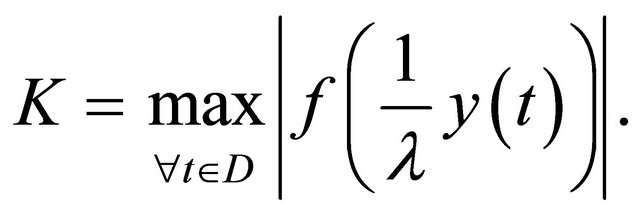
Proof. From Theorem 2 inequality (18) we have

As ![]() then
then 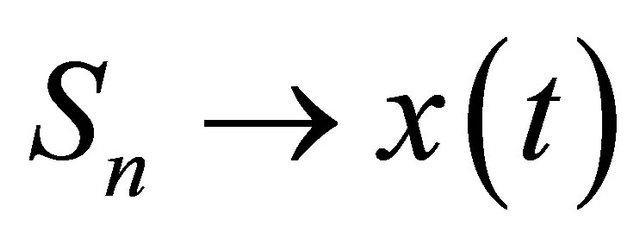 and
and
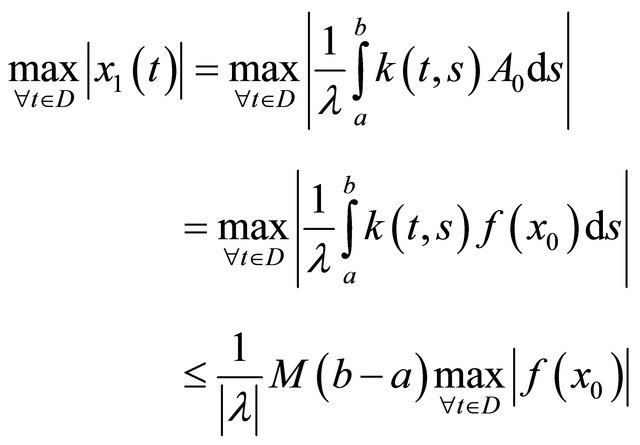
so,

Finally, the maximum absolute truncation error in the interval D is:
 (19)
(19)
This completes the proof.
4.4. Equivalence between DADM and ADM
Let D be a closed bounded set in 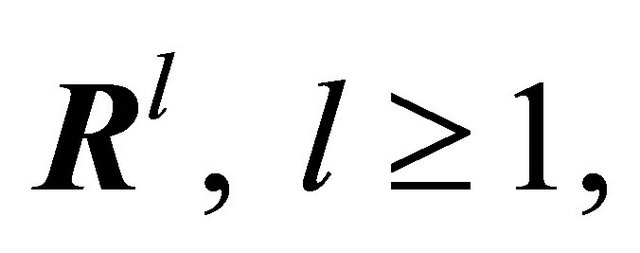 and define operator
and define operator ![]() such that
such that
 (20)
(20)
where ![]() is a compact operator on
is a compact operator on 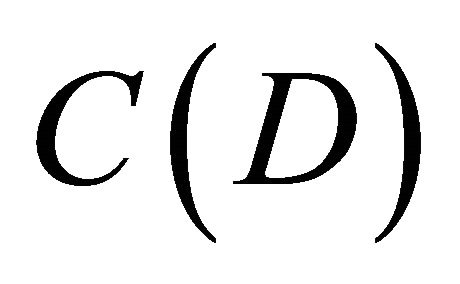 to
to  and is bounded on
and is bounded on  to
to  since
since

Now, Equation (1) can be written as
 (21)
(21)
let ![]() be the solution obtained by using ADM, where
be the solution obtained by using ADM, where
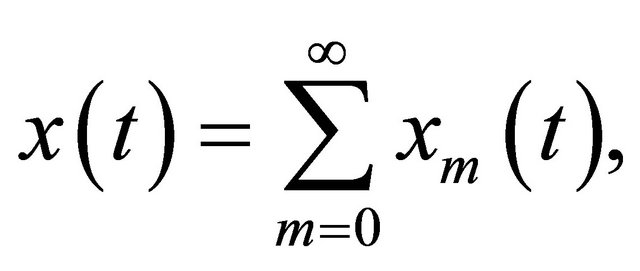 and
and  Define numerical integral operator
Define numerical integral operator  as
as
 (22)
(22)
where 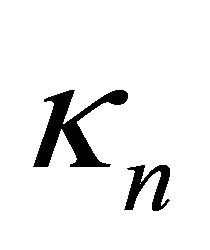 is linear finite rank bounded operator on
is linear finite rank bounded operator on 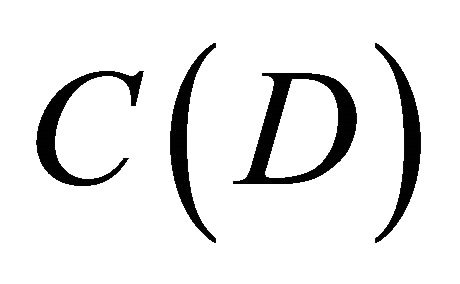 to
to  since
since

With the operator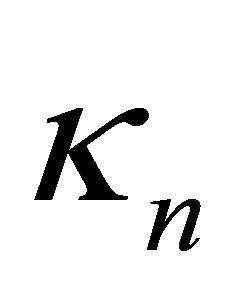 , Equation (1) may be written as
, Equation (1) may be written as
 (23)
(23)
where 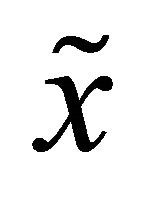 here is the solution obtained by using DADMand
here is the solution obtained by using DADMand 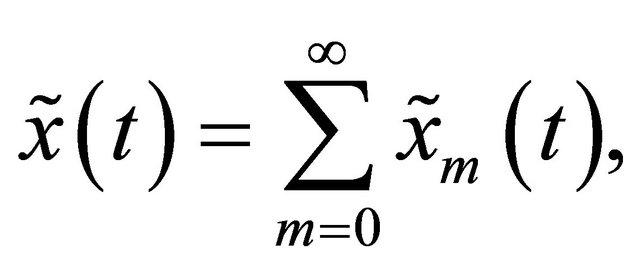 and
and 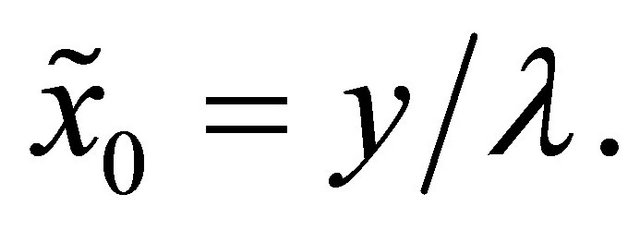
Theorem 4. Since  as
as ![]() where
where 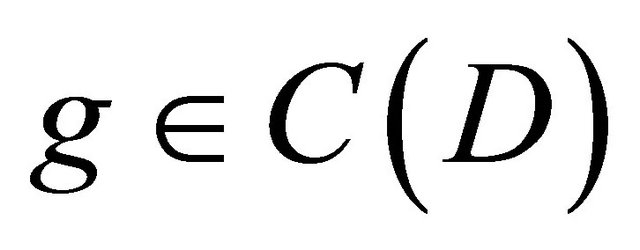 [18]. Then, the solution of Equation (1), using DADM converges to the solution of the same equation when using ADM, i.e.
[18]. Then, the solution of Equation (1), using DADM converges to the solution of the same equation when using ADM, i.e.

Proof. Since
 and
and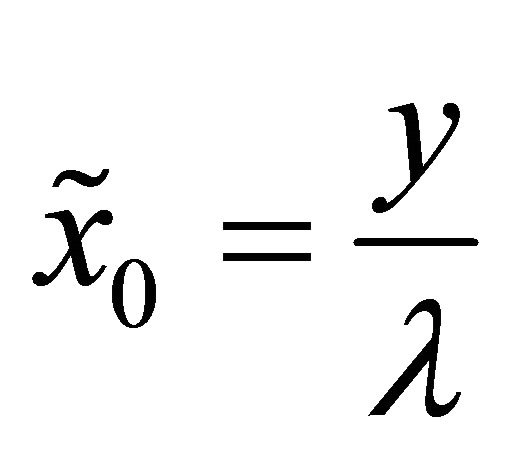 .
.
Starting with
 (24)
(24)
Since
 and (25)
and (25)
 (26)
(26)
Then, by induction and substituting from Equation (25) and Equation (26) into inequality (24), this completes the proof.
5. Numerical Experiments
Consider the following linear Fredholm integral equation
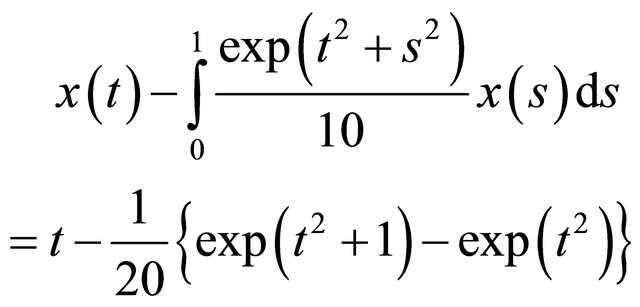
whose exact solution is . In this example the ADM can not be applied because the evaluation of
. In this example the ADM can not be applied because the evaluation of
 is conditioned to compute
is conditioned to compute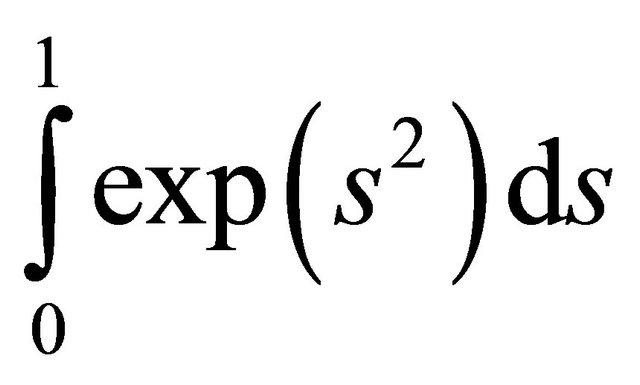 .
.
Since, the kernel is separable, the numerical implementation of ADM introduced in [15] can be used as well as DADM.
The solution by numerical implementation of ADM introduced in [15]

and the computation of  needs Equation (11) and Simpson’s rule [16-18] with number of subintervals
needs Equation (11) and Simpson’s rule [16-18] with number of subintervals 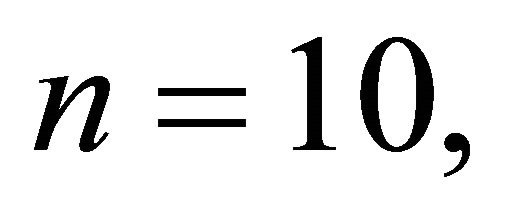 and step size
and step size  to obtain
to obtain

and so on. The approximate solution by this method is

and the maximum error is

Using Equations (15)-(17) and Simpson’s rule with number of sub-intervals n and step size 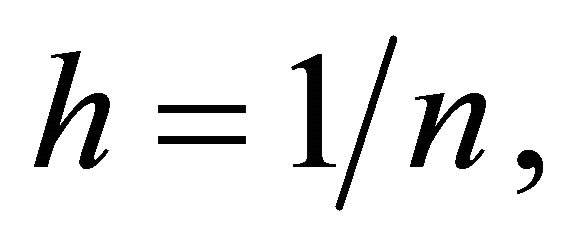 the results of DADM can be tabulated in Table 1. Table 1 shows the effect of n and m in the maximum absolute error
the results of DADM can be tabulated in Table 1. Table 1 shows the effect of n and m in the maximum absolute error 
Example (2) consider the following nonlinear Fredholm integral equation
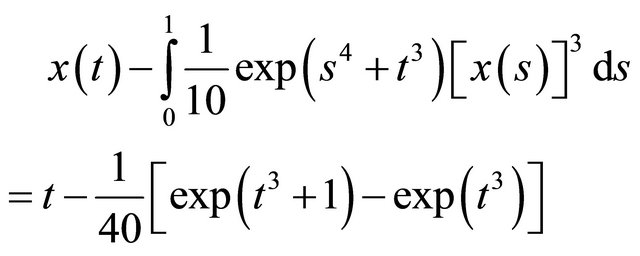
whose exact solution is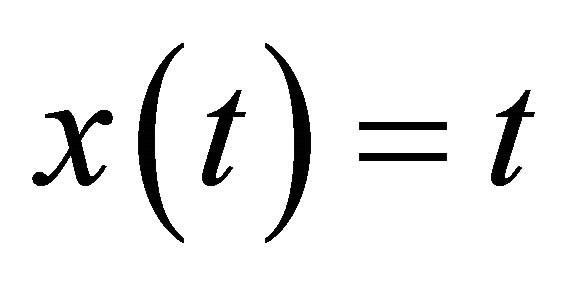 . In this example the ADM can not be applied because the integral
. In this example the ADM can not be applied because the integral
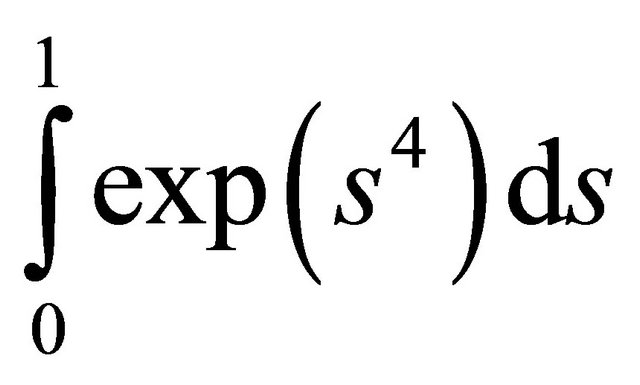 has no analytical solution. The numerical implementation of ADM introduced by [15] can be used, because the kernel is separable. Also, DADM can be used to obtain solution. Table 2 shows the effect of n and m in the maximum absolute error
has no analytical solution. The numerical implementation of ADM introduced by [15] can be used, because the kernel is separable. Also, DADM can be used to obtain solution. Table 2 shows the effect of n and m in the maximum absolute error

Example (3) consider the following nonlinear Fredholm integral equation

whose exact solution is . In this example the ADM can not be applied because the integral
. In this example the ADM can not be applied because the integral
 has no analytical solution. Also, the numerical implementation of ADM introduced by [15] can not be used, because the kernel function is not separable. Here, DADM is the suitable method to obtain solution. Table 3 shows the effect of n and m in
has no analytical solution. Also, the numerical implementation of ADM introduced by [15] can not be used, because the kernel function is not separable. Here, DADM is the suitable method to obtain solution. Table 3 shows the effect of n and m in
Table 1. The effect of n and m in the maximum absolute error (example 1).
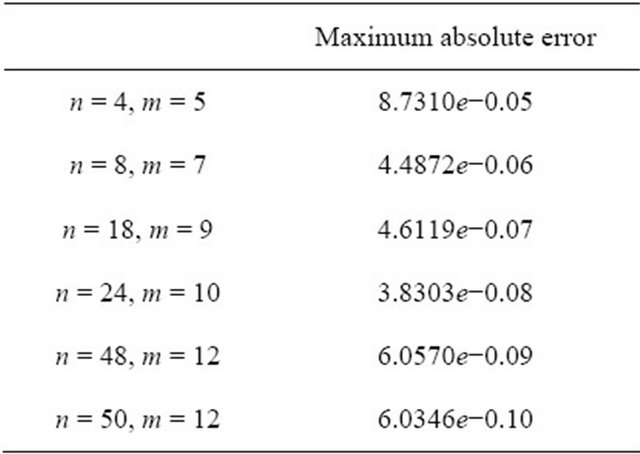
Table 2. The effect of n and m in the maximum absolute error (example 2).
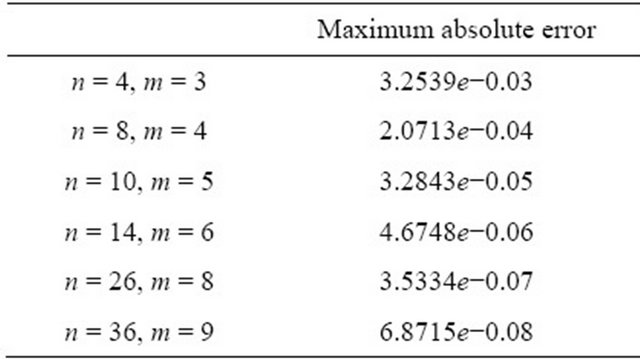
Table 3. the effect of n and m in the maximum absolute error (example 3).
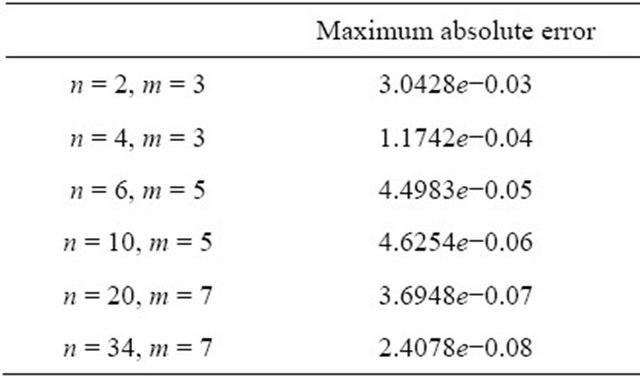
the maximum absolute error

6. Conclusion
Based on the accelerated Adomian polynomials formula (4) and the well known contraction mapping principles, convergence of DADM is discussed. Convergence approach is reliable enough to obtain an explicit formula for the maximum absolute truncated error of the Adomian’s series solution. The proposed DADM is more general method than that in [15] because it is capable to solve linear and nonlinear Fredholm integral equation with separable as well as non-separable kernel functions. DADM is recommended to solve linear and nonlinear Fredholm integral equation due to many advantages such as the matrix B is unchanged during the computation of the components, the solution need not to solve linear algebraic system of equations like Nystrom method and projection methods. Another advantage when applying DADM to solve linear Fredholm integral equation with symmetric kernel  is the matrix B will be symmetric matrix as in example (1).
is the matrix B will be symmetric matrix as in example (1).
REFERENCES
- K. E. Atkinson, “A Survey of Numerical Methods for the Solution of Fredholm Integral Equations of the Second Kind,” Society for Industrial and Applied Mathematics, Philadelphia, 1976, p. 237.
- F. G. Tricomi, “Integral Equations,” Dover Publications Inc., New York, 1985.
- L. M. Delves and J. L. Mohamed, “Computational Methods for Integral Equations,” Cambridge University Press, New York, 1985. doi:10.1017/CBO9780511569609
- M. A. Golbluerg, “Numerical Solution of Integral Equations,” Plenum Press, New York, 1990.
- G. Adomian, “Solving Frontier Problems of Physics: The Decomposition Method,” Kluwer Academic Publishers, Dordrecht, 1994.
- A. M. Wazwaz and S. A. Khuri, “Two Methods for Solving Integral Equations,” Applied Mathematics and Computation, Vol. 77, No. 1, 1996, pp. 79-89. doi:10.1016/0096-3003(95)00189-1
- A. M. Wazwaz, “A First Course in Integral Equations,” World Scientific Publishing Co., Singapore City, 1997. doi:10.1142/3444
- E. Babolian, J. Biazar and A. R. Vahidi, “The Decomposition Method Applied to Systems of Fredholm Integral Equations of the Second Kind,” Applied Mathematics and Computation, Vol. 148, No. 2, 2004, pp. 443-452. doi:10.1016/S0096-3003(02)00859-7
- A. M. Wazwaz, “A Comparison Study between the Modified Decomposition Method and the Traditional Methods for Solving Nonlinear Integral Equations,” Applied Mathematics and Computation, Vol. 181, No. 2, 2006, pp. 1703-1712. doi:10.1016/j.amc.2006.03.023
- Y. Cherruault, G. Adomian, K. Abbaoui and R. Rach, “Further Remarks on Convergence of Decomposition Method,” International Journal of Bio-Medical Computing, Vol. 38, No. 1, 1995, pp. 89-93. doi:10.1016/0020-7101(94)01042-Y
- I. L. El-kalla, “Convergence of Adomian’s Method Applied to a Class of Volterra Type Integro-Differential Equations,” International Journal of Differential Equations and Applications, Vol. 10, No. 2, 2005, pp. 225-234.
- I. L. El-kalla, “Error Analysis of Adomian Series Solution to a Class of Nonlinear Differential Equations,” Applied Mathematics E-Notes, Vol. 7, 2007, pp. 214-221.
- I. L. El-Kalla, “Error Estimate of the Series Solution to a Class of Nonlinear Fractional Differential Equations,” Communications in Nonlinear Science and Numerical Simulation, Vol. 16, No. 3, 2011, pp. 1408-1413. doi:10.1016/j.cnsns.2010.05.030
- E. A. Az-Zo’bi and K. Al-Khaled, “A New Convergence Proof of the Adomian Decomposition Method for a Mixed Hyperbolic Elliptic System of Conservation Laws,” Applied Mathematics and Computation, Vol. 217, No. 8, 2010, pp. 4248-4256.
- E. Babolian and A. Davari, “Numerical Implementation of Adomain Decomposition Method,” Applied Mathematics and Computation, Vol. 153, No. 1, 2004, pp. 301- 305. doi:10.1016/S0096-3003(03)00646-5
- A. J. Jerri, “Introduction to Integral Equations with Applications,” John Wiley & Sons Inc., New York, 1999.
- J. Stoer and R. Bulirsch, “Introduction to Numerical Analysis,” 3rd Edition, Springer-Verlag, Berlin, Heidelberg, New York, 2002.
- K. E. Atkinson, “The Numerical Solution of Integral Equations of the Second Kind,” Cambridge University Press, New York, 1997. doi:10.1017/CBO9780511626340
- K. Abbaoui and Y. Cherruault, “New Ideas for Proving Convergence of Decomposition Methods,” Computers & Mathematics with Applications, Vol. 29, No. 7, 1995, pp. 103-108. doi:10.1016/0898-1221(95)00022-Q
- M. M. Hosseini and H. Nasabzadeh, “On the Convergence of Adomian Decomposition Method,” Applied Mathematics and Computation, Vol. 182, No. 1, 2006, pp. 536-543. doi:10.1016/j.amc.2006.04.015
- K. Abbaoui and Y. Cherruault, “Convergence of Adomian’s Method Applied to Differential Equations,” Computers & Mathematics with Applications, Vol. 28, No. 5, 1994, pp. 103-109. doi:10.1016/0898-1221(94)00144-8
- R. Rajaram and M. Najafi, “Analytical Treatment and Convergence of the Adomian Decomposition Method for a System of Coupled Damped Wave Equations,” Applied Mathematics and Computation, Vol. 212, No. 1, 2009, pp. 72-81. doi:10.1016/j.amc.2009.02.006
- E. Kreyszig, “Introductory Functional Analysis with Applications,” John Wiley & Sons Inc., New York, 1978.
NOTES
*Corresponding author.

